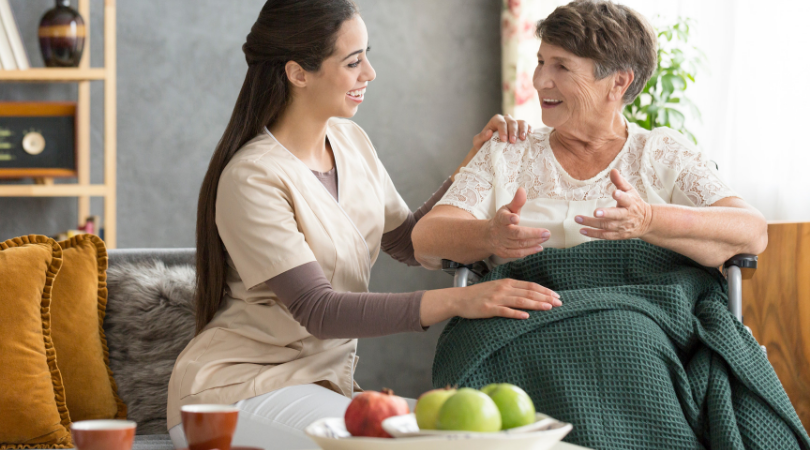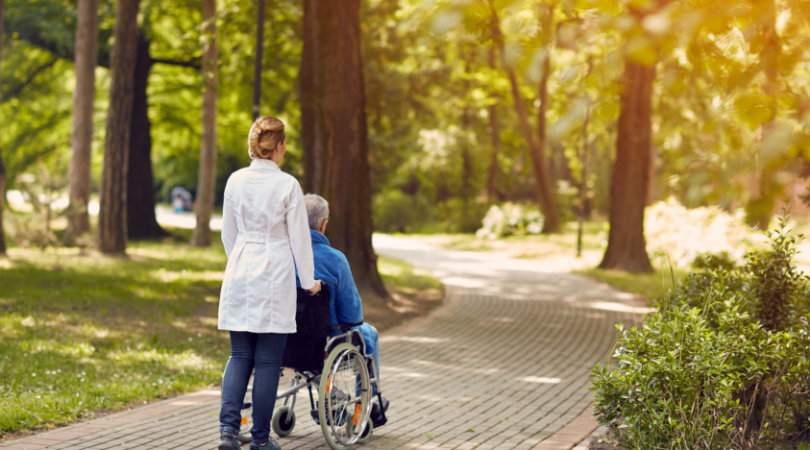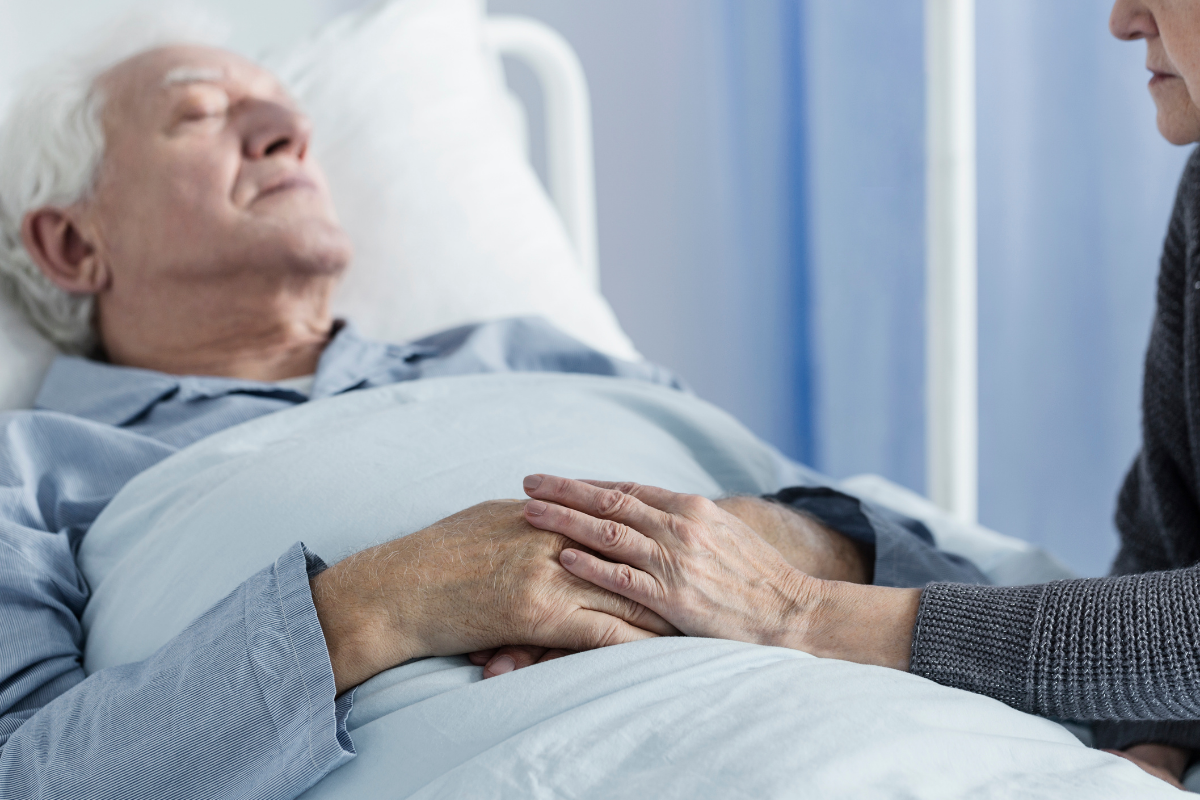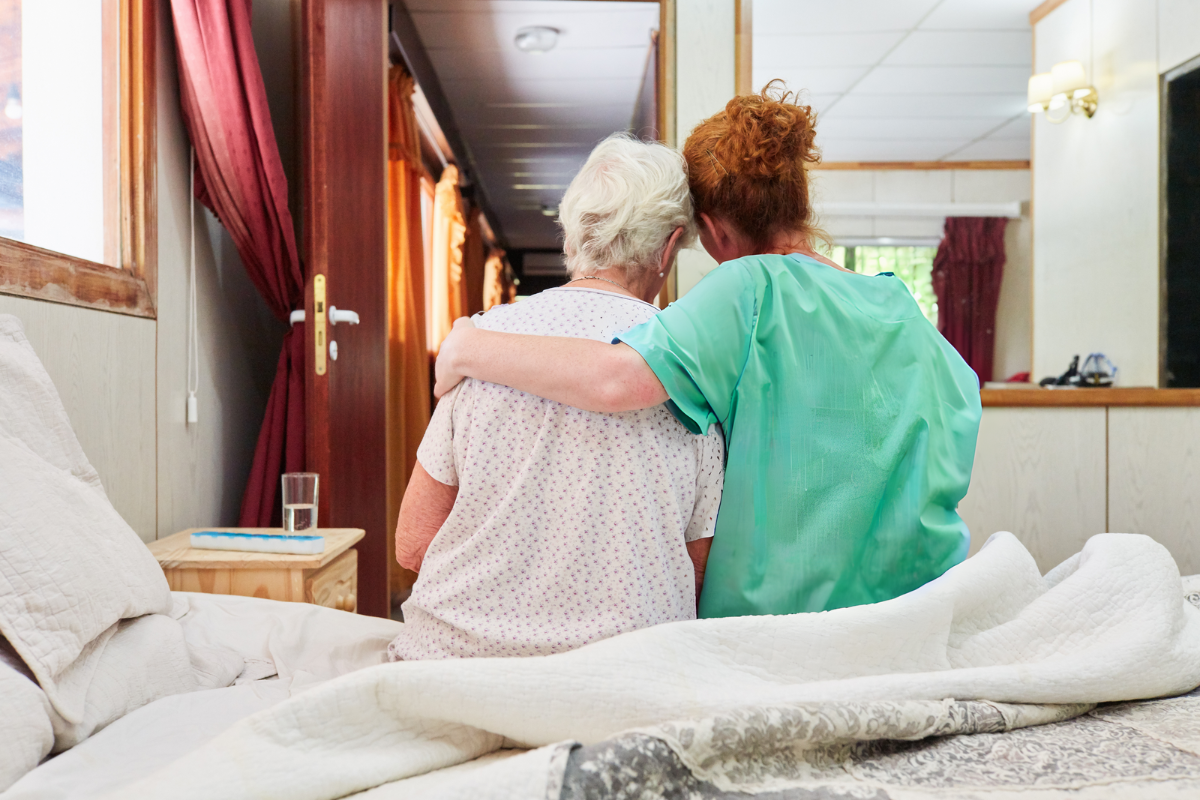What Does Hospice Do at Home?

When thinking about your final months, weeks, days and hours, where do you want to spend that time?
When Americans are asked this question, 80% say they want to be at home. Despite this answer, 60% pass away in the hospital and another 20% in nursing homes. While not every patient wishes to die at home and some cases will require hospital care, most patients can live out their remaining days at home with the support of hospice care.
Hospice care is a Medicare benefit that provides highly-trained end-of-life-care specialists as a supplement to the care being provided where the patient resides. This can be a nursing home, assisted living facility, or the patient’s own home.
What does hospice do at home?
When a patient elects to receive hospice at home, the first thing Crossroads Hospice & Palliative Care will do is assess the patient’s current condition and needs. All medical equipment and supplies related to the patient’s hospice diagnosis are provided at no cost to the patient or family.
A partner durable medical equipment provider will deliver necessary equipment to the home which can include items like a hospital bed, wheelchair, or commode. The hospice team will instruct the family on how to use the new equipment.
Supplies will also be delivered to the home at no cost. These could include items such as bandages, incontinence supplies, and gloves.
Any medications related to the patient’s hospice diagnosis will also be provided at no cost. The hospice team will arrange for a local pharmacy to deliver these medications to the home so that the family can focus on spending time with their loved one.

Home Hospice Visits
Patients will begin receiving visits from their hospice team throughout the week. Nurses will stop by to assess the patient’s physical condition. They will work with the patient’s physician to adjust medication and care based on the patient’s changing needs.
Hospice aides will visit several times a week to provide personal care. This includes bathing, grooming, assists with transfers, and feeding. This extra support allows family members to take a break, knowing their loved one is receiving personalized care according to their needs.
In addition, social workers will work with the patient and family to address emotional concerns, family care logistics, funeral planning, and connecting the family to additional resources available in the community or through government programs.
Chaplains visit to provide patients with spiritual support and provide companionship. Volunteers may also visit to provide additional companionship and to give the family a break.

Increased Quality Time
Receiving hospice care in the home allows the patient to remain in a place they feel comfortable. If the patient’s condition changes, Crossroads staff is available 24/7 to answer questions and provide care. As most declines can be treated in the home by the hospice team, the patient and family can avoid a late-night rush to the emergency room.
This extra time at home also allows the patient to remain a part of family gatherings and special events. Family members don’t need to arrange visits around hospital hours, but instead can spend relaxed time together at home, allowing them more time together to say all they need to say.
To see our hospice service areas and learn more about Crossroads supports families, please call 1-888-5643-3405.
If you found this information helpful, please share it with your network and community.
Copyright © 2019 Crossroads Hospice & Palliative Care. All rights reserved.




